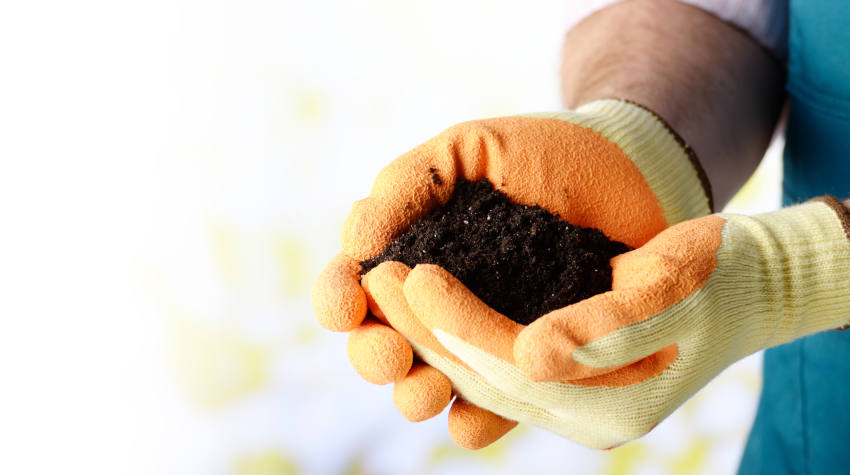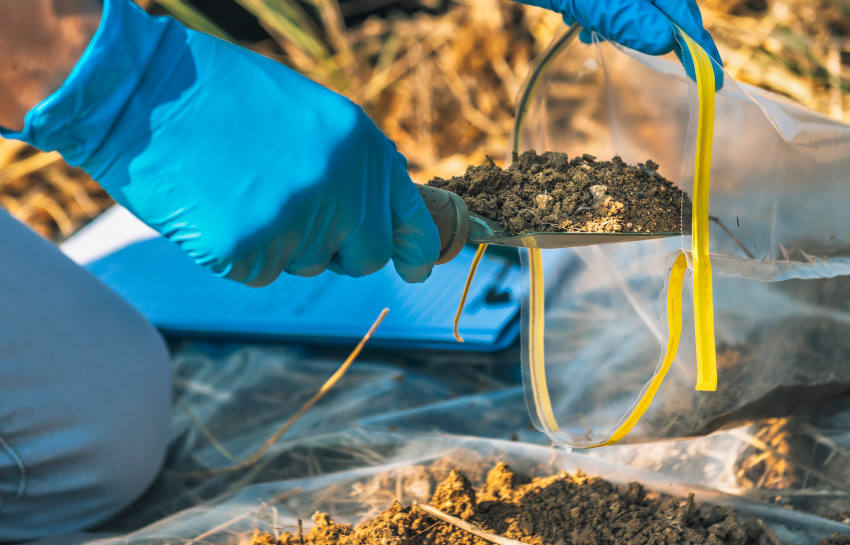Different Types Of Soil And How To Test For Them

Garden soil is typically a combination of three rock particles: sand, soil, and clay. The type of soil you have depends on the ratio of each particle in the soil. Certain qualities of the soil, such as water retention ability, are defined by the amount of each rock particle that is present in the soil. For example, if your soil is predominantly made up of sand particles, it will not hold water very well.
There are four main types of garden soil: sandy soil, silty soil, clay soil, and loamy soil.
Sandy Soil
If sand particles make up the majority of your soil, you have sandy soil. Sand is the largest particle type between sand, silt and clay. Sandy soil is dry and gritty to touch and cannot hold water well due to the large spaces between particles. As a result, seedlings planted in sandy soil are unlikely to survive as the water will drain away too quickly and may even carry the seedlings away with it.
Silty Soil
If silt particles make up the majority of your soil, you have silty soil. Silt particles are smaller than sand particles and feel smooth to the touch. This soil type has better water retention than sandy soil, however, it has poor drainage. Additionally, silty soil can easily compact when walked on and can become poorly aerated which can be detrimental to the growth of plants.
Clay Soil
Clay based soil has the smallest particles of all. This means that clay soil holds water and nutrients well and is slow to drain. However, due to the small particle size, little air is able to pass through. Plus, in dry weather clay soil can turn hard and compact making it heavy and difficult to work with.
Loamy Soil
Loamy soil is the ideal type of soil for gardening. It is made up of a balance of all three particle types: sand, silt, and clay. It is dark in colour and should feel soft and crumbly. As the ideal mix of all particle types, loamy soil holds water and nutrients, but also drains well and allows air to easily low through to the roots of the plants.
How To Test What Soil Type You Have

There is a very simple test that you can do to find out which type of soil you have. Grab a handful of soil, add a little bit of water and roll it into a ball in your hand.
If the soil does not form a ball and crumbles through your fingers, you have sandy soil. If the ball of soil is smooth to the touch and leaves dirt on your skin when you roll it, you have silty soil. If, when wet, the soil feels sticky and easily forms a ball, you have clay soil. Or if the soil creates a smooth, partly sticky ball that easily crumbles, you have loamy soil.
Another way to test the ratio of particles in your soil to find out what type of soil you have is to take a sample of soil from your garden and put it in a jar. Shake the jar well and then leave the soil to settle overnight. When you wake up the soil particles will have separated with the sand at the bottom and the clay at the top.
From here you can easily figure out your soil composition. For example, if there is more sand than silt and clay, you have sandy soil.
If you’re still not sure what type of soil you have, take a sample to your local landscaping store for some expert advice. Wellers Hill Hardware are your local hardware and landscape supply store. Our team is passionate about all things building and landscaping and are happy to help with all of your gardening queries. Visit us in store today or give us a call on 07 3848 1682.

